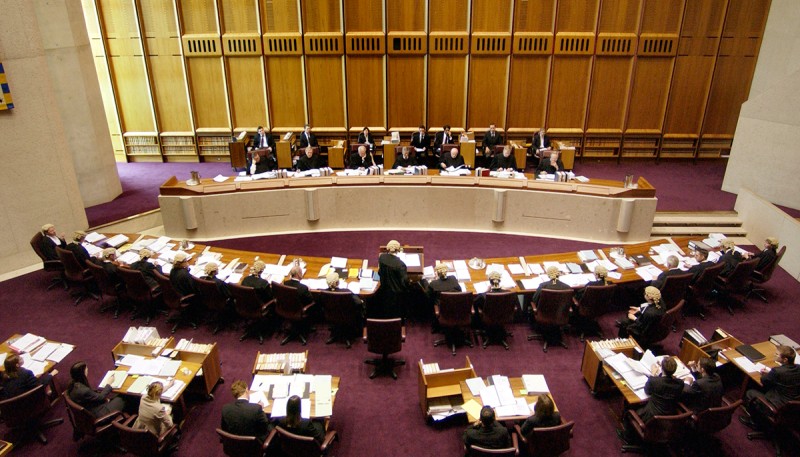Why does the High Court need to interpret the Constitution?
The High Court interprets the Australian Constitution to settle disagreements about what the rules mean and how they apply in real-life situations. It considers and decides whether the Australian Parliament has the power to make particular laws. It can also cancel any law, or part of a law, that it finds unconstitutional.
For example, in 2007 the High Court was asked to decide whether a law that banned all prisoners from voting in federal elections was allowed under the Constitution. The judges looked at section 7 and 24, which say that senators and members of the House of Representatives must be ‘directly chosen by the people.’ The judges decided a complete ban on all prisoners voting was not consistent with the meaning of the words in the Constitution. An earlier law was reinstated that allowed prisoners serving a sentence of 3 years or less to vote. It was seen a reasonable limit that still respected the meaning of the words in the Constitution.
The High Court of Australia

DPS Auspic
Description
The High Court of Australia in session in the High Court building in Canberra. The High Court interprets and applies Australian law and decides cases about national issues, including challenges related to the Australian Constitution.
In the courtroom, the 7 High Court Justices sit along a large semi-circular desk atop a small raise at the end of the room. The Justices preside over High Court proceedings, interpret laws and decide major legal cases.
In front, facing them, is another curved desk. Here, 18 barristers are sitting, most are wearing robes and wigs. A barrister is a type of lawyer who speaks on behalf of people or organisations in the courtroom. They present arguments and answer questions posed by the Justices.
Permission should be sought from DPS AUSPIC for third-party or commercial uses of this image. To contact DPS AUSPIC email: auspic@aph.gov.au or phone: 02 6277 3342.